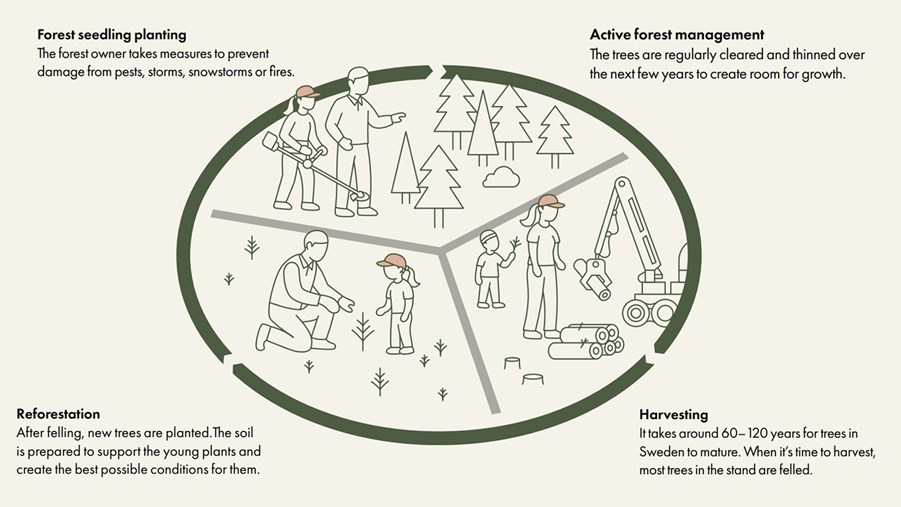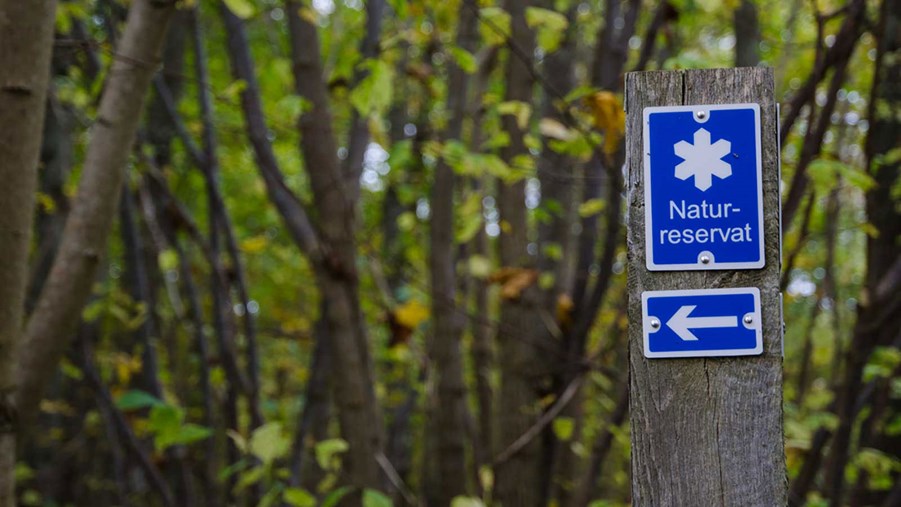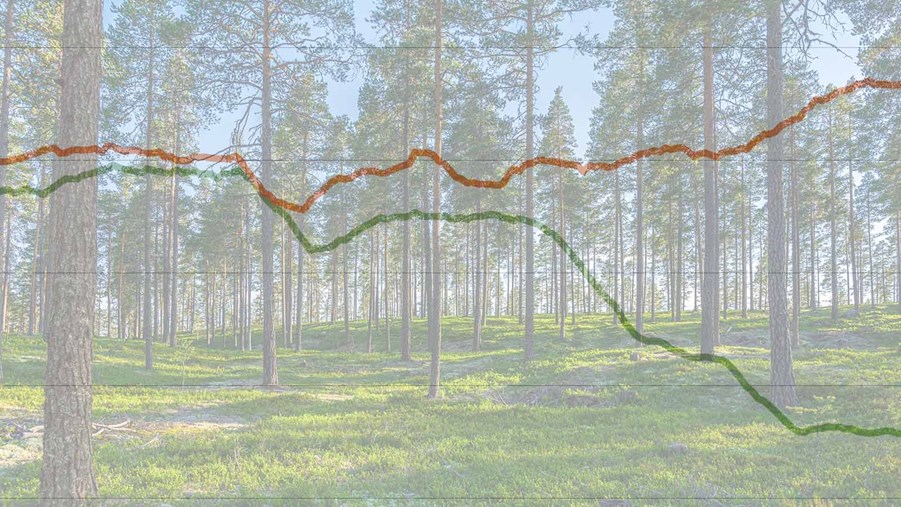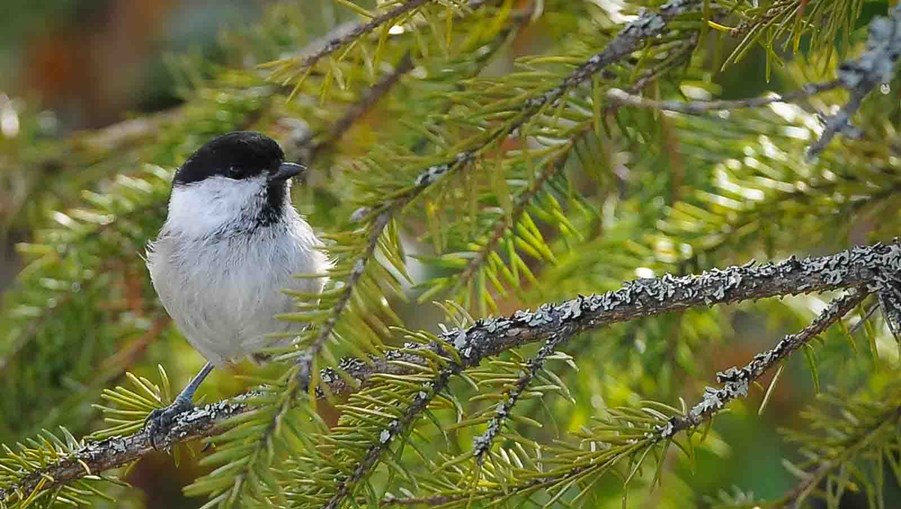
Sweden’s forestry model combines productivity with strong environmental responsibility. It is based on long-term, sustainable practices that ensure future generations can enjoy and use at least as much forest as we do today.
Seventy-five per cent of Swedish forests are actively managed. Clear-cutting is the predominant forest management system in Sweden. It is combined with various environmental protection measures, ranging from the preservation of entire forest areas to specific actions that promote biodiversity in each management activity – for example, leaving broad-leaved trees and deadwood in place.
Historically, clear-cutting became the standard method in Sweden for both productivity and environmental reasons. In the 1950s, there was criticism of the forest degradation caused by selective dimension cutting. The new scientific method of clear-cutting resolved many environmental problems that forestry faced then, and still faces in other parts of the world.
A cycle that lasts a century
With the clear-cutting method, forest management follows a cyclical process with various phases, just like in agriculture – but far longer. It begins with planting new trees, followed by clearing and thinning as they grow. Forests are monitored to detect threats such as pests, storms and fires.
When harvesting occurs, most trees in a stand are felled at once, while 5–10 per cent are left to preserve habitats and biodiversity. After felling, new trees are planted and the cycle continues.
Since the early 20th century, Swedish law has required reforestation after harvesting. For every tree felled, at least two – usually more – new ones are planted. This principle is the foundation of sustainable forestry.
Ownership
Sweden has one of the most mixed forest ownership structures in the world. Forest owners have considerable freedom under Swedish law, combined with responsibility for sustainable management. Read more about ownership here.


